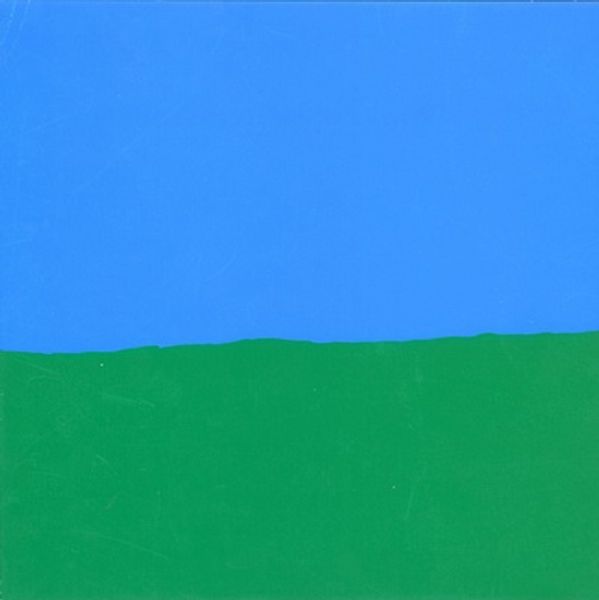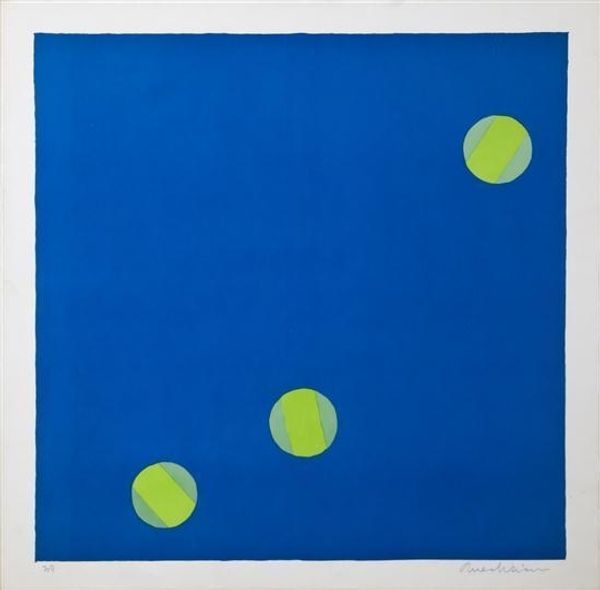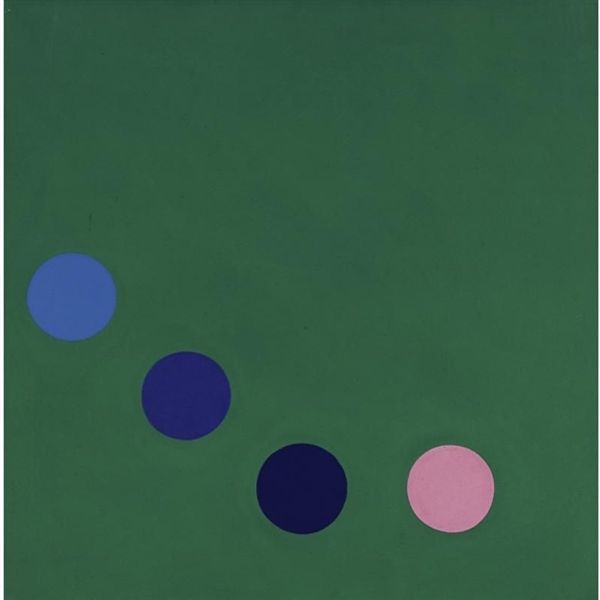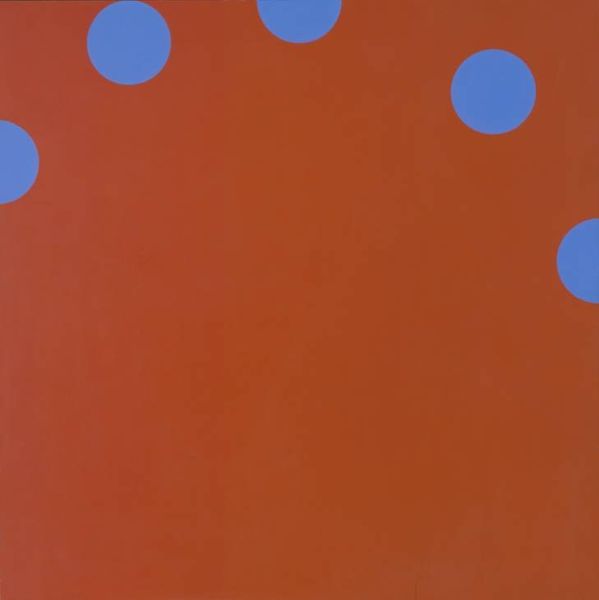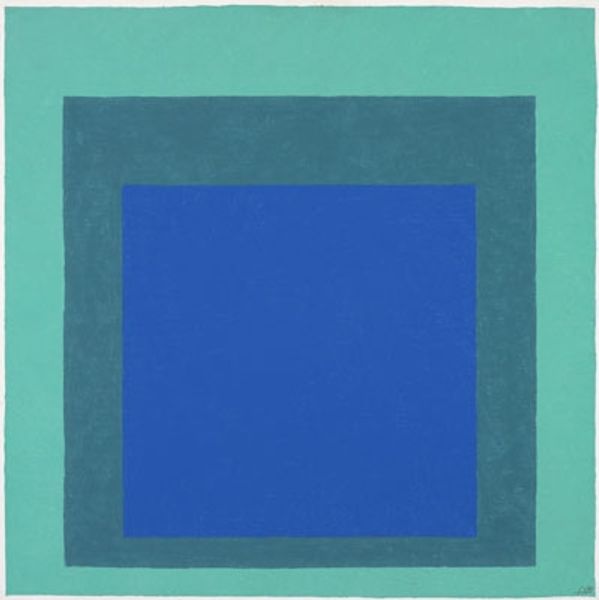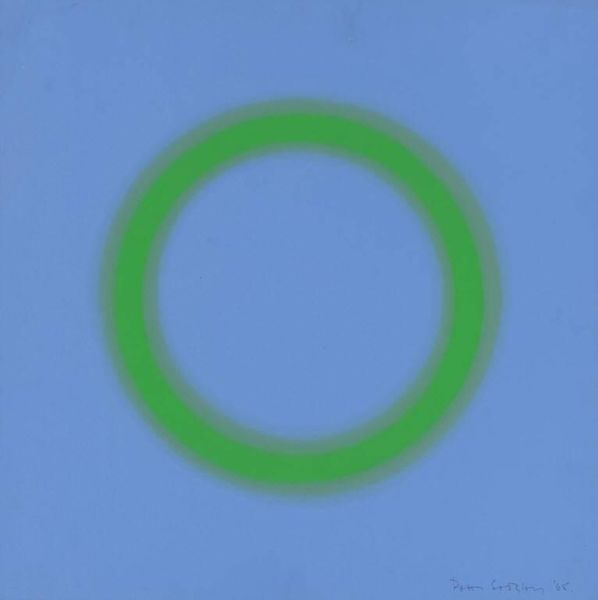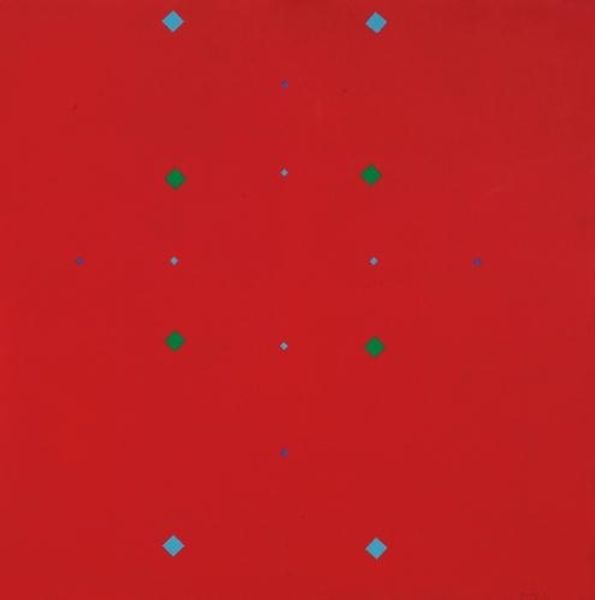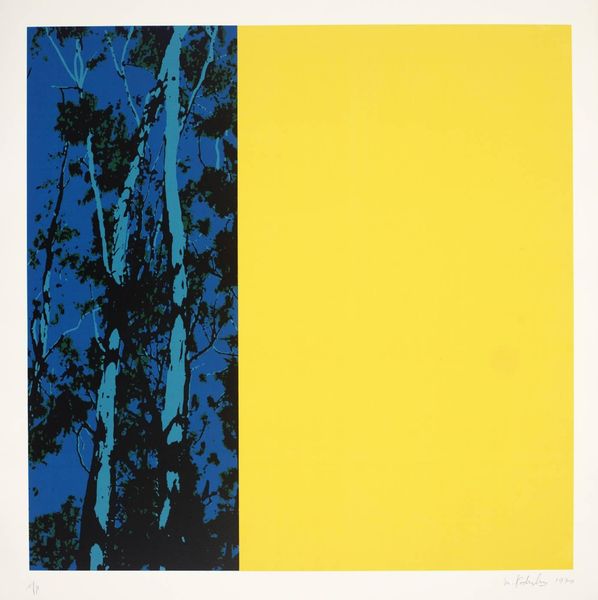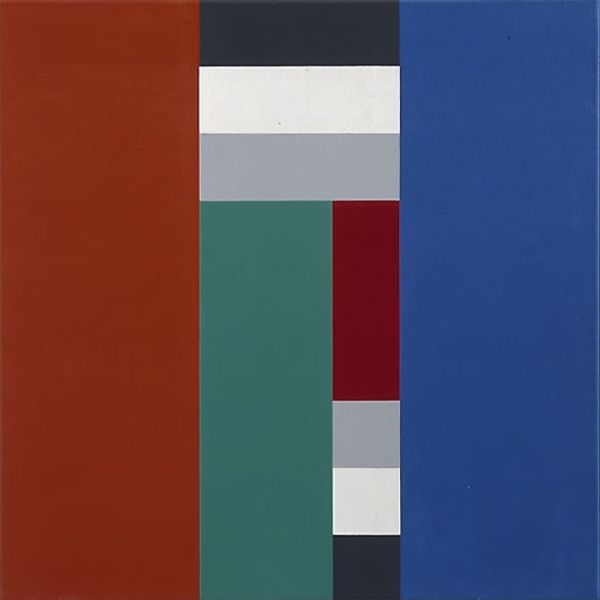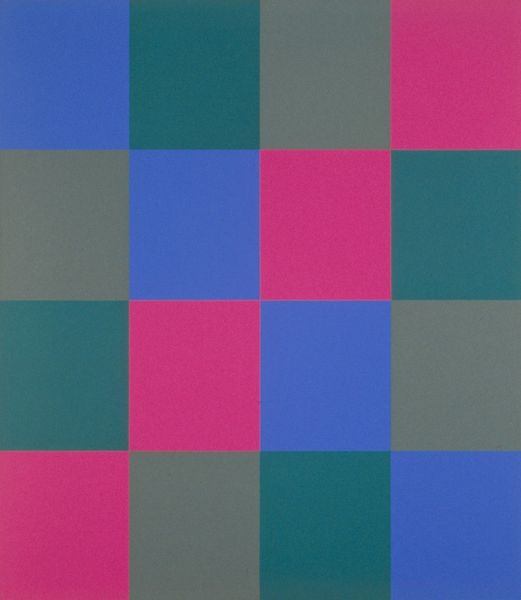
painting, acrylic-paint
#
abstract-expressionism
#
painting
#
colour-field-painting
#
acrylic-paint
#
acrylic on canvas
#
geometric
#
abstraction
#
pop-art
Copyright: Edward Avedisian,Fair Use
Curator: Right, let's discuss Edward Avedisian's "Flying Luck" from 1960. Avedisian worked with acrylic on canvas to produce this work, part of his output that dabbles in color-field painting with a hint of pop. Editor: It strikes me immediately as deceptively simple. Two green circles against this vast expanse of blue, yet it’s so visually arresting. The circles almost vibrate against the ground. Curator: Interesting. Consider how Avedisian was positioned in the New York art scene. He utilized readily available acrylics, a relatively new material at the time, moving away from traditional oil paints. His method mirrored the rapid industrial changes taking place; accessible materials led to democratization of art production. Editor: Yes, but consider the precision with which he's laid down the color. The flat, unmodulated fields speak to a specific aesthetic choice. It's about paring down, simplifying, finding a visual language in the essential elements—form, color, surface. There’s a tranquility achieved with these bold colours. Curator: Tranquility? Maybe on the surface. But let's consider the 'luck' element in the title, "Flying Luck". This coincides with postwar optimism, mass production and marketing techniques shaping society's collective dreams, hopes. Are these colours chosen to convey consumer culture, reflecting optimism? Editor: Possibly, but the symmetry of the geometric forms creates balance. There’s an inherent tension created as the circles disrupt this harmonious balance – one located in the top-left quadrant and the other on the bottom right, causing the eye to be in a constant state of visual equilibrium, as it moves about the canvas. Curator: That may be, but isn't art and production entangled inextricably in terms of accessibility? Art objects were commodified more visibly during the time it was made! Avedisian’s embrace of pop vocabulary brings light to consumer society’s new place during post-war American consciousness. Editor: I can grant you that. I still hold to the power of reduction. “Flying Luck” utilizes form, space and composition as key structural elements. In effect, this allows him to distill and magnify visual qualities. The raw physicality evokes something quite elemental. Curator: Ultimately, understanding the materials available during artistic construction grants perspective on the values and ideologies that may have shaped it during its period. It's the same reason this image doesn't strike me the same way knowing more of what underpinned his approach, from resources to collective psyche. Editor: Indeed, there are multiple valid viewpoints when you examine works from varied conceptual framework – be it their impact, how they affect viewers, or whether its forms are determined merely by circumstances. Thank you.
Comments
No comments
Be the first to comment and join the conversation on the ultimate creative platform.
